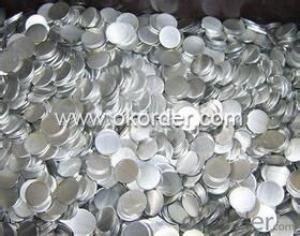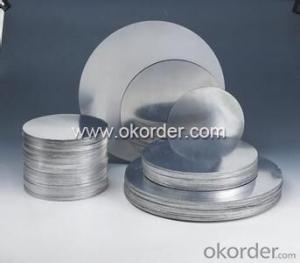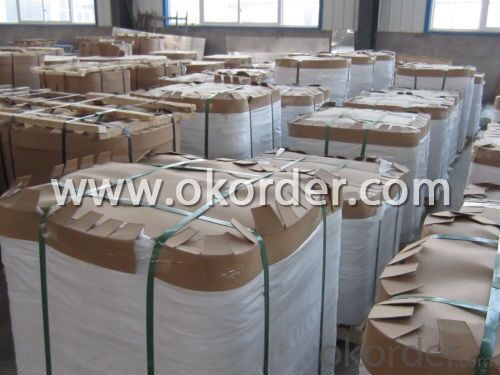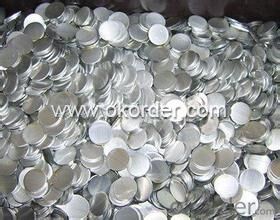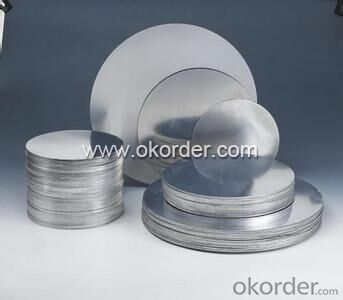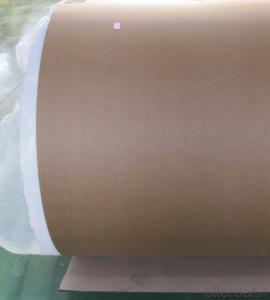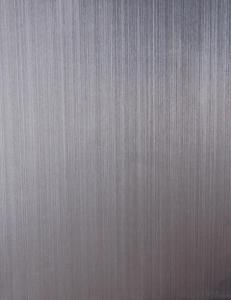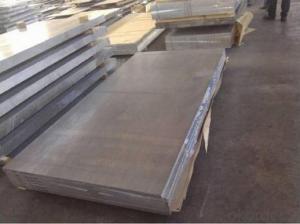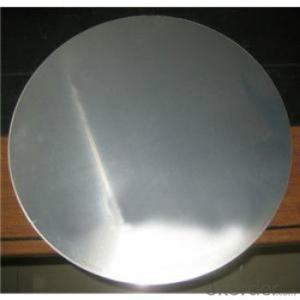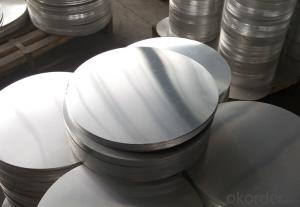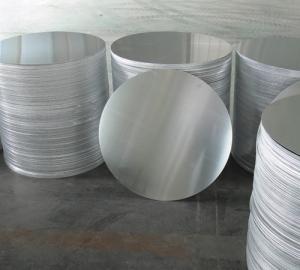3mm Thick Honeycomb Aluminum Circle Series 1/3 for Making Pan
- Loading Port:
- Shanghai
- Payment Terms:
- TT OR LC
- Min Order Qty:
- 3 m.t.
- Supply Capability:
- 9000 m.t./month
OKorder Service Pledge
OKorder Financial Service
You Might Also Like
Specification
1 Specifications of Aluminum Circle AA1100
| Original Price | USD2690 |
| Current Price | USD2600 |
| Alloy | AA1100 CC |
| Temper: | H12, H14, H16, H18, H22, H24, H26, H32,HO, F |
| Thickness: | 0.2mm-3mm |
| Diagonal | 150mm-900mm |
| Standard: | GB/T17748-1999, ASTM, ISO, EU standard |
| Special Specification is available on customer’s requirement | |
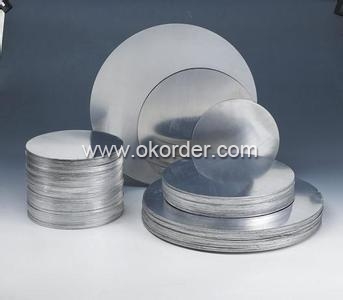
2 Usage/Applications of Aluminum Circle AA1100
Aluminum Circles have a wide variety of applications in cookware and kitchenware, including fried pans and pressure cooker. C.C. circle is excellent for spinning, deep-drawing (depth less than 10 cm), color or non-sticky painting with quite competitive price.
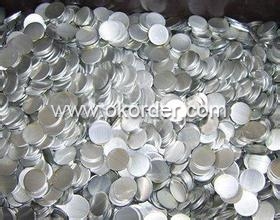
3 Packaging & Delivery of Aluminum Circle AA1100
Packaging: Seaworthy package, bubble plastic bag inside, anti-moisture paper wrapped outside, covered with cartons, on wooden pallets, in containers. Pallet weight: Max. 2.30 tons.
Shipment: the goods will be delivered in 40 days after getting the buyer's payment.

4 Production Flow of Aluminum Circle AA1100
Melting-Rolling- Cutting- Annealing--Packing
- Q: Do 101 aluminum sheets have any specific anti-corrosion properties?
- Yes, 101 aluminum sheets do have specific anti-corrosion properties. Aluminum naturally forms a protective oxide layer on its surface when exposed to oxygen, which acts as a barrier against corrosion. This oxide layer, also known as aluminum oxide, is highly resistant to rust and corrosion. Additionally, 101 aluminum sheets are alloyed with small amounts of iron and silicon, which further enhance their corrosion resistance. These sheets are often used in applications where corrosion resistance is crucial, such as in marine environments, chemical processing plants, and outdoor structures. However, it's important to note that while aluminum is highly resistant to corrosion, it can still be susceptible to certain types of corrosion in specific conditions, such as pitting corrosion in chloride-rich environments. Therefore, proper care and maintenance should still be followed to ensure the longevity and effectiveness of 101 aluminum sheets in preventing corrosion.
- Q: What are the different methods of surface treatment for aluminum sheets?
- Aluminum sheets can undergo various surface treatment methods, each with its own purpose and desired outcome. Popular methods include anodizing, chromate conversion coating, painting, and powder coating. Anodizing is commonly used to enhance the corrosion resistance and durability of aluminum sheets. This involves immersing the sheets in an electrolytic bath and applying an electric current to create a controlled oxide layer on the surface. The result is a protective and decorative coating that can be colored or sealed. Chromate conversion coating, also known as chemical conversion coating or chromating, applies a thin layer of chromate to the aluminum sheets. This method provides excellent corrosion resistance and improves paint adhesion. The coatings can be clear or have a yellowish or iridescent appearance. Painting is a widely used method to protect aluminum sheets and improve their visual appeal. Sheets are typically pre-treated with a primer to enhance adhesion, followed by the application of a topcoat for protection and color. Painted aluminum sheets come in a wide range of colors and finishes, suitable for various applications. Powder coating is an environmentally friendly and durable surface treatment for aluminum sheets. It involves electrostatically applying a dry powder onto the sheets, which is then cured in an oven. The powder melts and fuses to form a tough and attractive coating. Powder coating offers excellent resistance to corrosion, chemicals, and UV radiation. In addition to these methods, other techniques like polishing, buffing, and mechanical finishes can be employed to achieve specific desired appearances or surface qualities. Ultimately, the choice of surface treatment method for aluminum sheets depends on factors such as desired corrosion resistance, aesthetic requirements, environmental considerations, and the intended application of the sheets.
- Q: Can aluminum sheet be used for medical applications?
- Yes, aluminum sheet can be used for certain medical applications. It is commonly utilized in medical equipment, such as imaging machines, as it is lightweight, durable, and has good electrical conductivity. However, it is important to note that aluminum's use in direct contact with the human body or in implants is limited due to potential health concerns and the availability of more suitable materials.
- Q: Are 101 aluminum sheets suitable for food packaging?
- Indeed, 101 aluminum sheets prove to be apt for food packaging purposes. The food packaging industry widely embraces aluminum owing to its remarkable attributes. Notably, it boasts a lightweight nature, durability, and resilience against corrosion, rendering it an ideal substance for maintaining the freshness and caliber of food products. Moreover, aluminum serves as a commendable shield against light, moisture, and oxygen, thereby prolonging the shelf life of packaged edibles. Thus, it is evident that opting for 101 aluminum sheets is a fitting decision for food packaging endeavors.
- Q: Can the aluminum sheets be used for manufacturing ventilation systems?
- Yes, aluminum sheets can be used for manufacturing ventilation systems. Aluminum is a lightweight and durable material that has excellent corrosion resistance properties, making it suitable for ventilation applications. It can be easily formed and fabricated into various shapes and sizes, allowing for the customization of ventilation components. Additionally, aluminum is a good conductor of heat, which can be beneficial for HVAC systems that require efficient heat transfer.
- Q: How are aluminum sheets cleaned and maintained?
- Achieving effective cleanliness and maintenance for aluminum sheets can be accomplished through a straightforward process. To commence, it is crucial to eliminate any loose dirt or debris from the sheet's surface. This can be accomplished by utilizing a soft brush or cloth to gently sweep away the particles. Subsequently, a mild detergent solution can be concocted by combining a small quantity of dish soap or a specialized aluminum cleaner with warm water. This solution ought to be applied to the sheets utilizing a soft sponge or cloth. It is essential to steer clear of abrasive materials or cleaners containing harsh chemicals, as these may inflict harm upon the aluminum surface. Once the detergent solution has been applied, the sheets should be thoroughly rinsed with clean water to eradicate any residue. It is pivotal to guarantee the complete removal of all soap or cleaner, as any remaining residue could result in staining or discoloration over time. Upon ensuring the sheets are clean, they should be dried using a clean, soft cloth or towel. This measure aids in preventing the formation of water spots or streaks on the surface. It is imperative to refrain from utilizing abrasive materials or engaging in vigorous rubbing, as this could lead to scratches on the aluminum. Regarding maintenance, it is advisable to regularly inspect the aluminum sheets for any indications of damage or corrosion. If any areas are discovered to be compromised, immediate repair or replacement should be undertaken to prevent further deterioration. Furthermore, applying a protective coating to the aluminum sheets is advantageous. This can be achieved by employing a specialized aluminum sealant or a clear lacquer. Such a coating serves to safeguard the surface against environmental factors like moisture, sunlight, and pollutants. In conclusion, the process of cleaning and maintaining aluminum sheets necessitates gentle and regular cleaning with a mild detergent solution, thorough rinsing, and drying with a soft cloth. Additionally, inspecting for damage and applying a protective coating can contribute to extending the longevity and enhancing the appearance of the sheets.
- Q: Aluminum knowledge. What is the model 3003 H24? What does H mean?
- According to the main alloy aluminum alloy elements can be divided into 2 * * * for Al Cu alloy aluminum (Al--Cu), 3 * * * aluminum manganese alloy aluminum (Al--Mn), 4 * * * series of aluminum silicon alloy aluminum (Al--Si), 5 * * * for aluminium magnesium alloy aluminum (Al--Mg). 6 * * * for Al Mg Si alloy aluminum (AL--Mg--Si), 7 * * * for aluminum and zinc alloy aluminum [AL--Zn--Mg-- (Cu)].
- Q: Are 101 aluminum sheets suitable for lightweight structural applications?
- 101 aluminum sheets are appropriate for lightweight structural applications. Aluminum is well-known for its lightweight characteristics, making it a popular option for structural applications that prioritize weight reduction. The 101 aluminum alloy is specifically engineered to provide high strength and excellent formability, making it an ideal selection for various structural components. These sheets can be utilized in industries such as aerospace, automotive, and construction, where the emphasis is on reducing weight while maintaining structural integrity. Furthermore, 101 aluminum sheets possess good corrosion resistance, rendering them suitable for outdoor applications or environments with elevated moisture levels. In conclusion, 101 aluminum sheets are a dependable choice for lightweight structural applications due to their strength, formability, and corrosion resistance properties.
- Q: What does aluminum plate "H12" mean?
- The utility model is suitable for the products with stable mechanical performance after work hardening, heat treatment or heat treatment in the process of processing. The H3 state is only applicable to the alloy gradually softening at room temperature (unless stabilized). H4 - the state of work hardening and coating treatment. The utility model is suitable for products with incomplete annealing after work hardening and after coating treatment.The second digits behind the H indicate the degree of work hardening of the product. The number 8 indicates a hard state. The minimum tensile strength of a hx8 is specified by the sum of the minimum tensile strength of the o state and the specified strength difference. For the states between O (annealed) and hx8 States, the numbers from 1 to 7 should be added after the HX code, adding the number 9 to the HX to indicate a more severe state of hardening than the hx8.
- Q: Are 101 aluminum sheets suitable for food-grade applications?
- No, 101 aluminum sheets are not suitable for food-grade applications.
Send your message to us
3mm Thick Honeycomb Aluminum Circle Series 1/3 for Making Pan
- Loading Port:
- Shanghai
- Payment Terms:
- TT OR LC
- Min Order Qty:
- 3 m.t.
- Supply Capability:
- 9000 m.t./month
OKorder Service Pledge
OKorder Financial Service
Similar products
Hot products
Hot Searches
Related keywords

